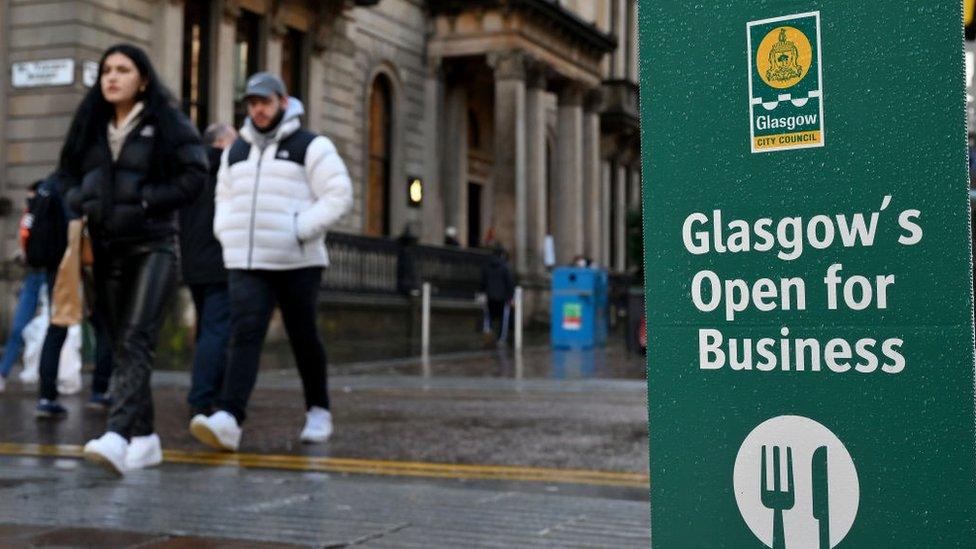How lockdown changed Scotland's high streets
- Published
- comments
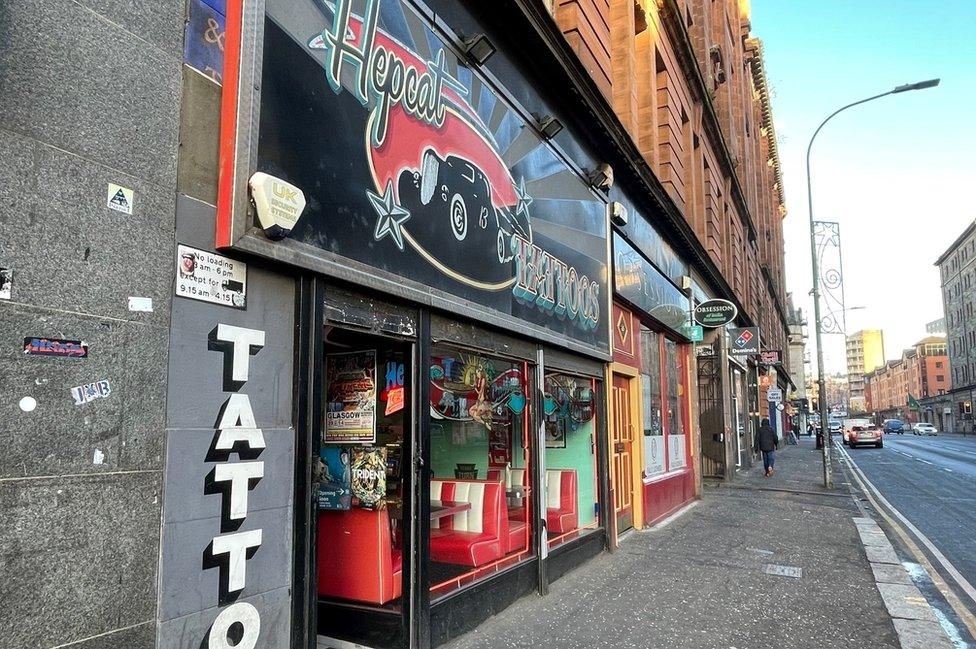
The number of tattoo parlours rose by 7% in Scotland
Scotland's high streets have more fast food outlets and beauty services but fewer clothes shops, research shows.
New analysis by the BBC data team reveals the big changes to the retail and hospitality sectors across the country since lockdown.
Scotland-wide, there are now 8% fewer clothes shops but 12% more fast food outlets since 2020.
And in the city centre of Glasgow there are now more beauty service providers than pubs.
The BBC Data team looked at every town and city across the UK to see how they had changed since March, 2020.
What emerged in Scotland was a picture of high streets transforming fast - squeezed by the Covid lockdown and the rise in demand for internet shopping and eating out.
To find out how the nearest High Streets and shopping areas near you have changed since the beginning of the pandemic, type in your postcode below.
If you can't view the postcode lookup, click here, external. For further detail on the Ordnance Survey data used in the postcode search above, please see full methodology at the bottom of the page.
Traditional retail destinations have suffered the most. Edinburgh's Princes Street lost 27% of its retailers since March 2020, while Clackmannanshire has 9% fewer shops than it did two years ago.
Analysis of Ordnance Survey's Points of Interest mapping data revealed other Scottish findings including:
A 7% rise in tattoo parlours
The loss of more than one in ten cashpoints
A 9% rise in hair and beauty salons, including a 23% hike in Falkirk alone
The number of fish and chip shops increasing by 6%
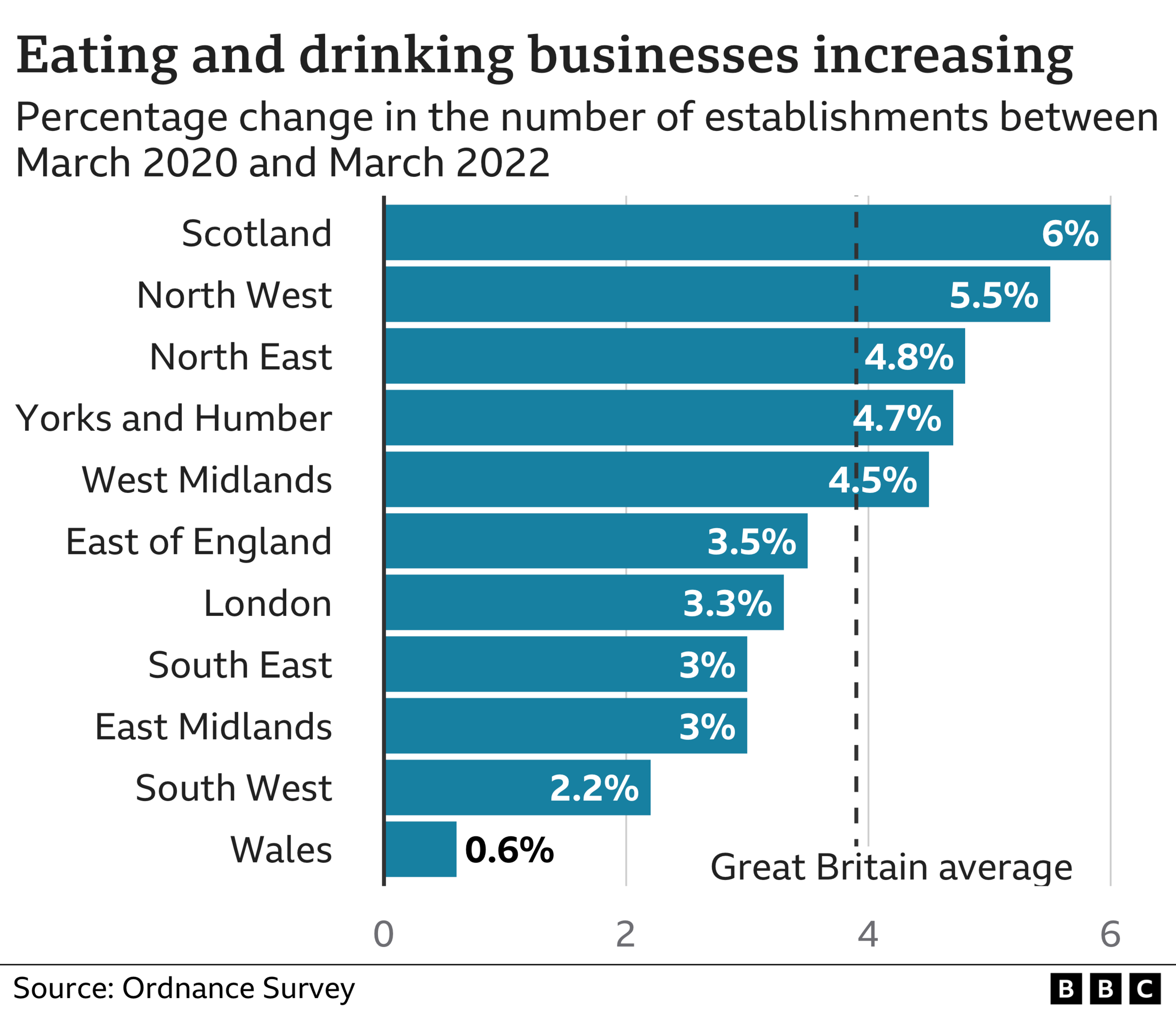
In positive news for the hospitality sector, Scotland has 936 more more eating and drinking establishments than before the pandemic - the highest increase in the UK - driven by more cafes and fast food outlets.
But the decline of some parts of this sector is illustrated in the G1 and G2 postcodes of central Glasgow.
Hair and beauty services are now the most common type of shop here - overtaking pubs and bars which were the most prevalent in March 2020.
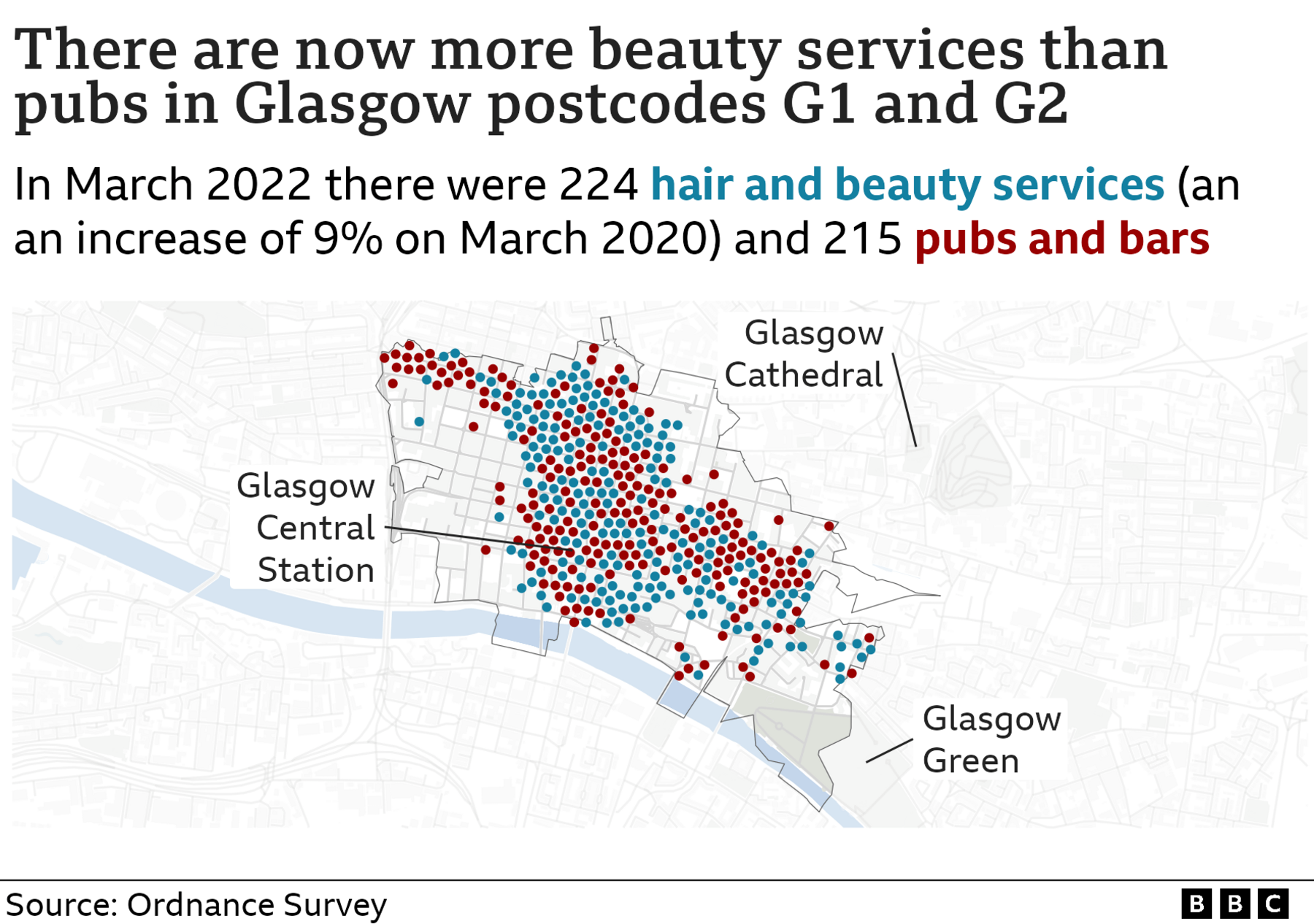
Ewan MacDonald-Russell, deputy head of the Scottish Retail Consortium, said the Covid lockdown accelerated many of the changes that were already being seen on the high street before the pandemic.
He said: "The way that huge change happened, it meant we got about five or six years of change in the space of five or six months.
"The consequence of that is a lot of retailers now operate from fewer shops and where they have shops there is a distinct reason to go to them.
"We have to be careful about phrases like 'death of the high street' because actually it is about the transformation of the high street, retail might not be as big a footprint but hospitality and others will."
'So many empty units'
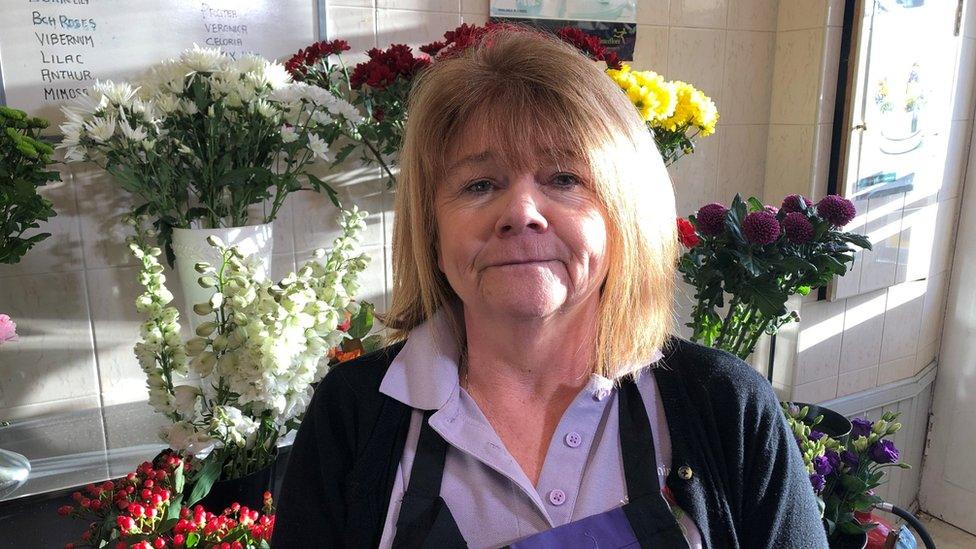
Mary Morrow, a florist in Stirling, said it has been noticeably quieter since the Covid lockdown
Like many places in Scotland, Stirling has seen an increased number of 'To Let' signs since the Covid pandemic.
Retailers in the city say there is a vicious circle of fewer shops resulting in fewer people on the streets.
Mary Morrow, owner of Blooming Wonderful florists, managed to keep her business going by working from home during the pandemic. But she has not seen the customers return to her shop in the same numbers since.
She said: "If you don't have anyone going past then you won't have anyone coming in, the streets are so empty.
"This time of year a few years ago it would be buzzing. There would be people in the shop, it would be busy, but there is just not the footfall now.
"It is the price of the units, people can't afford the rent - reduce the price of the units and get more people in."
Josine Atsma, owner of the Stirling Health Food Store, ramped up her online presence during lockdown and says it can now account for 50% of her sales some days.
She said: "It is the main reason why we are still here, I dare say.
"There are fewer people coming in and people are spending less.
"I try to be friendly and know my customers. Also, you don't need to only buy from Amazon if you are buying online, independents are on there too."


The pandemic delivered a hammer blow to many high street stores. Some didn't survive the experience. The lockdown prompted a stampede towards online shopping and for many customers, they're found they like it.
There's no way back.
So retail chains have been forced to cut back on the number of stores they own; it saves them money but leaves yawning gaps in high streets. And in their place, what appears? Shops which sell a service - not a thing.
To state the obvious, you can't get a haircut, tattoo or a fish supper online. The future of these new shops looks safe for now. But what a difference we've seen, in just a couple of years.
Perhaps one lesson stands out from this research and that is high streets can change very fast. And much needs to be done to nurture, support and protect our town and city centres.

Methodology
The data is a combination of two datasets from Ordnance Survey (OS).
To report which businesses have opened and closed we have used the Points of Interest dataset.
This is a comprehensive, location-based directory of all public and privately-owned businesses, education and leisure services in England, Scotland and Wales. Points of Interest contains over four million records and is updated four times a year. The BBC has analysed data from a selected number of categories within the Points of Interest database.
For the purpose of this research we have used one data release in March 2020 and one in March 2022, to give a snapshot of the points of interest across Great Britain that were active at those times.
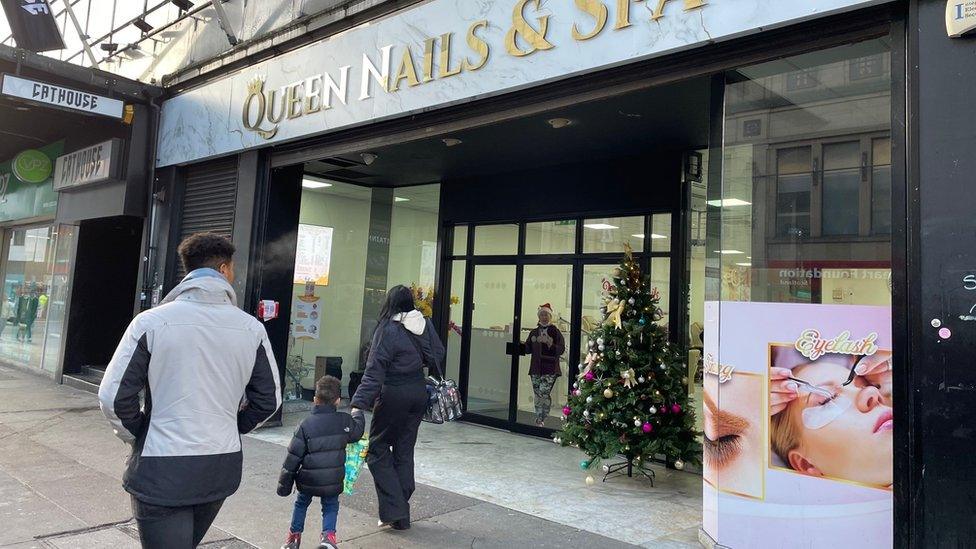
For the interactive postcode look-up, to report the number of businesses on 10 of the High Streets and shopping areas close to the postcode entered, we have used the OS Retail Geographies dataset.
This is an experimental dataset from the Ordnance Survey describing the geography of shopping across Great Britain. It clusters retail areas using street names and includes local High Streets, retail parks and shopping centres. Longer streets are divided into smaller sections where there is a change of road name or retail addresses are more then 150m apart. The resulting clusters must also meet the minimum threshold of 15 retail addresses for highly populated urban areas and five retail addresses for smaller rural areas.
To find the 10 nearest shopping areas to the postcode you have entered, we have chosen the 10 where the middle of the box surrounding the area is closest to the centre point of the postcode boundary as the crow flies. There may be some streets that are very close to the postcode, but do not quite fit this criteria; or there may be some which are very close as the crow flies as we have defined it, but may not be the easiest to travel to.
Everywhere else that we have reported the number of businesses, we have counted the number of points from the Points of Interest dataset that fall within the relevant geographic area, regardless of whether they fall within a street as defined by the Retail Geographies datas
- Published6 December 2022
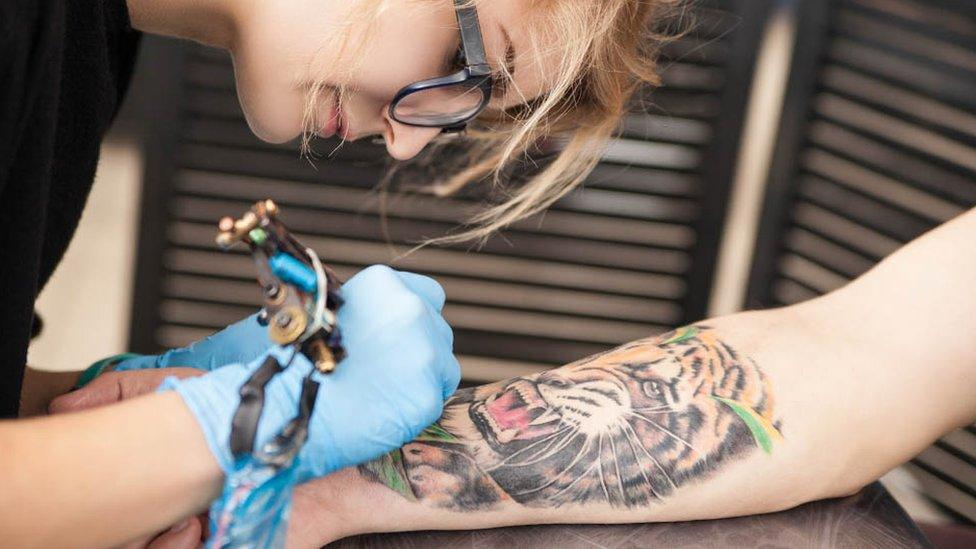
- Published15 March 2021
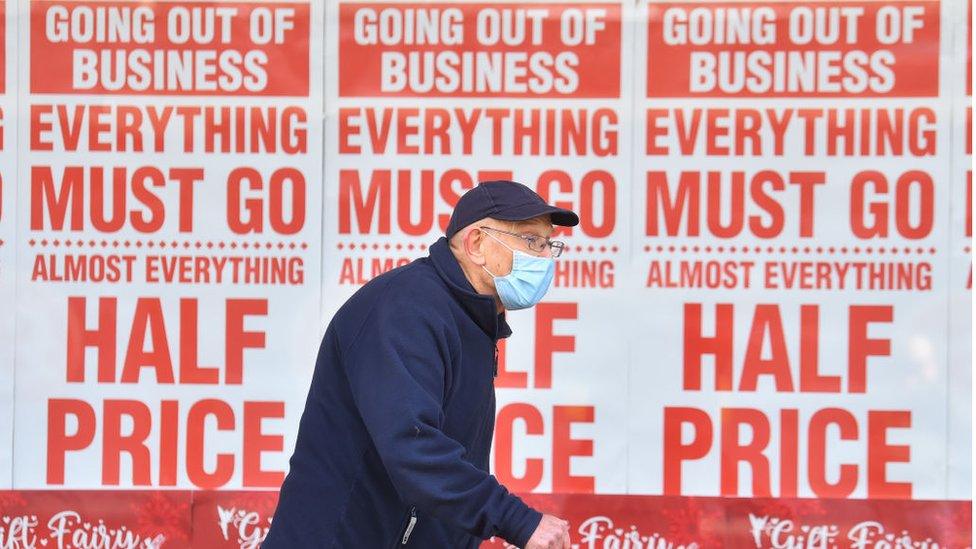
- Published20 April 2022
